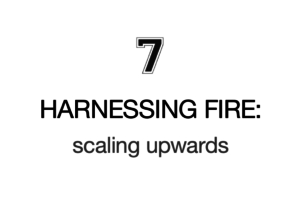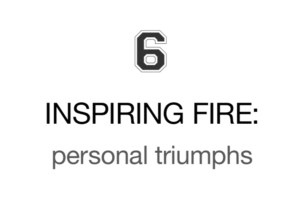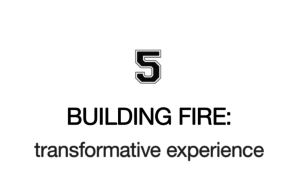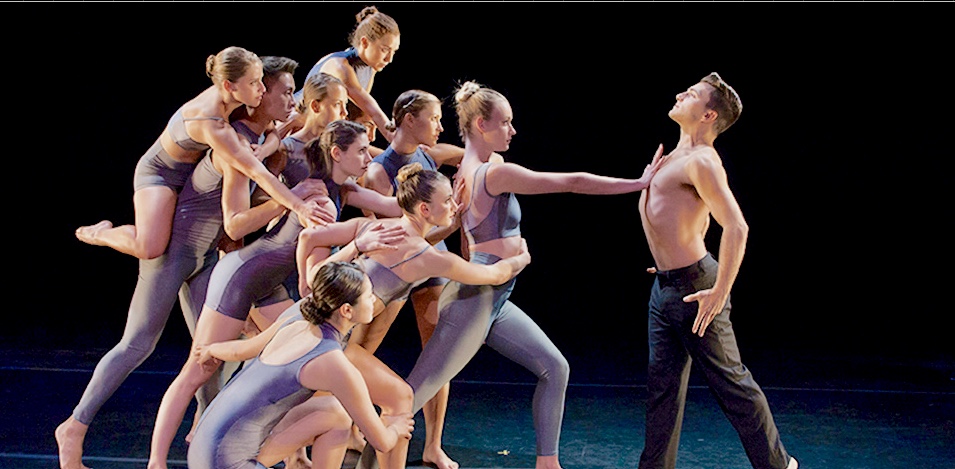BUILDING VALUE TAKES time, usually a couple of years, so if possible, we recommend getting started early in high school, sophomore or even freshman year for your college admissions endeavor.
Once the fire of strong talents and interests gets lit, there’s no reason to stop. Building confidence and esteem to high levels assures that your student will:
• Have a clear vision and purpose for the future to guide his college selection
• Convey her story with pride and excitement on her applications
• Head into college with strength and momentum
We have found in our work with young people that when they fuel their sparks in their deepest ambitions, they consistently exceed their wildest expectations. Potential has no limitations, and the discovery of this fact is an integral part of the Brand U process that we call Scaling Upwards.
By Scaling Upwards, students take their skills and passions as far as they possibly can.
Scaling Upwards puts the defining touches on your child’s accomplishments, allowing personal goals and achievements to build on themselves:
• If your student has completed a research project or won a competition or scholarship, these accomplishments can be used to raise awareness and bring a positive message through media recognition.
• If your student has created art or writing or has performed at a local level, that success can be used to build community support to push the accomplishments into state, national, and even international forums.
• If your student has started a business, nonprofit, club, or community program, that achievement can be expanded and replicated in locations beyond the local level.
scaling upwards: third-party recognition.
In the ultra-competitive arena of college admissions, third-party recognition validates your student’s ambition and purpose by profiling achievement in ways that colleges can see.
It’s great if a student starts a nonprofit, but if that nonprofit gets written up in a newspaper or garners a positive quote from a mayor or civic leader, that achievement is suddenly awarded far more weight and importance. Likewise, if a young person forms an acting group that stages a play, that’s great, but that achievement will be far greater if it’s written up in the local paper.
Third-party recognition is a primary method for scaling upwards, and it’s not as hard as it looks. With so many negative stories always swirling around, media outlets—from local papers and TV news to online media—are hungry for positive stories about young people taking initiative and making a difference.
Recognition can take any number of forms:
• Getting a research paper or journalistic piece published
• Getting pro led by TV news or newspaper for academic and
extracurricular successes.
• Winning a science project, or getting one’s name in the
newspaper for starting a community service.
• Superlative comments from teachers for academic success
• Positive recognition from leadership gures
For college admissions, third-party recognition will make your student a “triple threat” in the eyes of admissions reps, taking the ambition and achievement and providing the substantiation they deserve. Remember, admissions officers only have fifteen minutes to learn who your student is. When colleges see that your student’s hard work has been validated in this way, they’ll fling their doors open.
I’m passionate about this point because it works every time. ird- party recognition ensures that your child’s hard work stands out from the thousands of other applicants to make sure that their theme of value is clearly positioned in the minds of admission officers.
Sharon from Belmont, Massachusetts
Sparks: Love of computers, commitment, teamwork
Harnessing Fire: Third-party recognition
When we met Sharon as a sophomore, she spoke of her interests in computer science and engineering. Working with her parents, we explored ways that she could develop leadership skills in the field. During her sophomore year, she began pursuing opportunities through tech clubs and science fairs, and got involved in her school’s Robotics Team. By her junior year, she’d earned the respect of her teammates and was chosen to lead the team. Dedicating herself to her passion, she coached her team in the invention of a brand new prototype robot, and earned a series of victories in science contests at the state, national, and ultimately international level.
Her achievement yielded her a story in a national magazine article celebrating youth in science, and her work garnered further recognition through a national “Women in the Sciences” award. She also earned a prestigious scholarship to attend USC.
Discovered Brand: Robotics Developer
We must note that some students will not feel comfortable pursuing third-party recognition for various reasons. Some don’t enjoy being the center of the spotlight, and others may think that recognition is prideful. If your child feels this way, congratulate yourself on raising a sincere child. At the same time, recognition is not about self-glorification. It’s about building something much larger than oneself. Recognition can be used to raise awareness for worthy causes, unify the community, and inspire others to realize what is possible when a person takes action.
Next time — a 3rd party recognition exercise. Goal: To make sure your child’s hard work and achievements get the validation they deserve!





